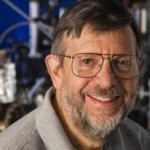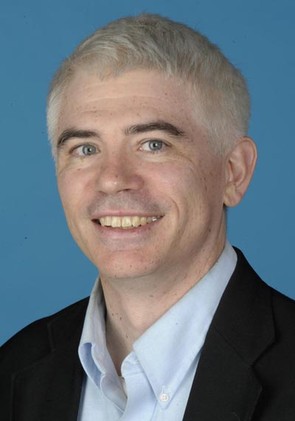Speakers
Plenary Speakers
Wil liam Phillips, NIST and University of Maryland
liam Phillips, NIST and University of Maryland
William D. Phillips is a Fellow of the Joint Quantum Institute, a cooperative research organization of the National Institute of Standards and Technology and the University of Maryland, which is devoted to the study of quantum coherent phenomena. At NIST he leads the Laser Cooling and Trapping Group, and at JQI he is the co-director of an NSF-funded Physics Frontier Center studying quantum phenomena across the subfields of physics. The research group led by Dr. Phillips has been responsible for developing some of the main techniques now used for laser cooling and cold-atom experiments in laboratories around the world. Today, the group pursues research in laser cooling and trapping, Bose-Einstein condensation, atom optics, collisions of cold atoms, cold atoms in optical lattices, quantum information processing, quantum simulation of the behavior of complex systems, and the study of cold-atom analogs to condensed matter. Dr. Phillips is a fellow of the American Physicial Society and the American Academy of Arts and Sciences. He is a Fellow and honorary member of the Optical Society of America, and a member of the U.S. National Academy of Sciences. In 1997, Dr. Phillips shared the Nobel Prize in Physics “for development of methods to cool and trap atoms with laser light.”
Eva Andrei, Rutgers University
“Graphene and the Magic of Physics in Two Dimensions”Eva Andrei holds a Board of Governors Professorship in the Department of Physics and Astronomy at Rutgers University. She is a condensed matter experimentalist employing magneto-transport, scanning tunneling microscopy and spectroscopy to elucidate the electronic properties of graphene and other 2-dimensional materials. Andrei is recognized for her work on 2-dimensional layers of electrons on helium, the interface of semiconductor heterojunctions and vortices in superconductors. She is known particularly for her ground-breaking work on graphene, a one atom thick layer of crystalline carbon with extraordinary electronic properties which stem from charge carriers that resemble massless neutrinos. Andrei is a fellow of the American Association for the Advancement of Science, a member of the American Academy of Arts and Sciences and a fellow of the National Academy of Sciences. She holds the Medal of Physics from CEA, a French government research organization. In 2010, she recieved the Rutgers Board of Trustees Award for Excellence in Research.
Abh ay Ashtekar, Penn State University
ay Ashtekar, Penn State University
Dr. Abhay Ashtekar is the Eberly Professor of Physics and the Director of the Institute for Gravitational Physics and Geometry at Pennsylvania State University. He is the founder of loop quantum gravity, a leading approach to the problem of unification of general relativity with quantum physics. This theory has provided unique insights into the very early universe by going beyond the standard Big Bang paradigm, and into the quantum nature of black holes via quantum geometry of their horizons. Dr. Ashtekar’s research contributions have been recognized through numerous awards. In particular, he is a Fellow of American Association for Advancement of Science and a Foreign Fellow of The National Academy of Sciences of India.

Kate Kirby, Executive Director of the American Physical Society
Dr. Kate Kirby is the Executive Officer at the American Physical Society. Dr. Kirby earned her bachelor’s degree in chemistry and physics from Harvard/Radcliffe College and her Ph.D. from the University of Chicago. After a postdoctoral fellowship at the Harvard College Observatory she was appointed as Research Physicist at the Smithsonian Astrophysical Observatory and Lecturer in the Harvard University Department of Astronomy. From 1988 to 2001, she served as an Associate Director at the Harvard-Smithsonian Center for Astrophysics, heading the Atomic and Molecular Physics Division. From 2001-2007, she served as Director of the Institute for Theoretical Atomic, Molecular and Optical Physics (ITAMP) at Harvard and Smithsonian. Dr. Kirby’s research interests lie in theoretical atomic and molecular physics, particularly the calculation of atomic and molecular processes important in astrophysics and atmospheric physics. She is a Fellow of both the American Physical Society and American Association for the Advancement of Science.
Maura McL aughlin, West Virginia University
aughlin, West Virginia University
Maura McLaughlin is an Associate Professor at West Virginia University, where she studies neutron stars and their environments using radio, X-ray and gamma-ray observations. One aspect of her work focuses on the use of extremely precise millisecond pulsar “clock” signals to detect gravitational waves through the NANOGrav collaboration and the International Pulsar Timing Array. She is a recipient of an Alfred P. Sloan Fellowship and a Cottrell Scholar Award. She is also active in public outreach and has involved over 800 high-school students from West Virginia and 17 other states in pulsar searches!
Dan Vergano, National Geographic
“A Brave New World: Science News in the Age of Social Media”Dan Vergano is a senior writer-editor at National Geographic, where he focuses on space, archaeology and enterprise reporting. He was formerly the senior science writer/columnist at USA Today and has written freelance reports for Men’s Health, New Scientist, Air & Space Smithsonian, and The Washington Post. Since 2012, Vergano has been adjunct faculty at New York University’s Washington, D.C. campus, teaching feature writing. Vergano was a 2007-08 Nieman Fellow at Harvard, where he concentrated on the intersection of science and politics. He won the 2011 Gene Stuart Award from the Society for American Archaeology for a story and video series on Maya archaeology, and the 2006 David Perlman Award for Excellence in Science Journalism from the American Geophysical Union for a USA Today cover story on climate change. Vergano graduated from Penn State in 1990 a member of the Tau Beta Pi Association with a B.S. in aerospace engineering. Before moving to journalism, Vergano worked as a space policy analyst and aerospace engineer for a federally funded research and development contract organization.
Invited Speakers
2. Brad Cenko, Goddard Space Flight Center
3. Cora Dvorkin, a senior-level postdoc from IAS Princeton
4. Lucy Bai, Penn State
5. Sergey Frolov, University of Pittsburgh
7. Chandralekha Singh, University of Pittsburgh
8. Vito Scarola, Physics Department, Virginia Tech
9. Kin Fai Mak, Penn State
10. Erik Blaufuss, University of Maryland Scientist and IceCube Analysis Coordinator
Penn State University is committed to an open, sensitive, understanding, and responsive campus environment. All participants of this conference are asked to all work together to discourage behavior within our community that is dehumanizing, including sexual harassment. For more information, see http://www.psu.edu/dept/aaoffice/sexharass.htm


